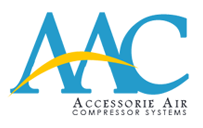-
Desiccant Dryers
desiccant-dryers
-
Kaeser Heatless Desiccant Dryers - KAD Series
Flow Capacities Maximum inlet flow capacities at various pressures:
To determine a dryer's inlet flow capacity at inlet pressures other than 100 psig, multiply the dryer's rated inlet flow (found in Table 1) by the multiplier from Table 2 that corresponds to the system pressure at the dryer inlet.
KAD Dew Point Options Meet ISO 8573.1 Air Quality Standards (Table 3)
Models KAD and KAD PS allow the user to select outlet pressure dew points corresponding to the four different ISO 8573.1 air quality classes.
KAD E models are preset to deliver the commonly used ISO 8573.1 Class 2 outlet pressure dew point.
Outlet flow capacities:
For dryers operating at less than maximum flow and using the Purge Economizer feature and/or operating at pressures other than 100 psig, contact factory for correct purge flow. -
Kaeser Heated Purge Dryers - KED Series
Flow Capacities Maximum inlet flow capacities at various pressures:
To determine a dryer's inlet flow capacity at inlet pressures other than 100 psig, multiply the dryer's rated inlet flow (found in Table 1) by the multiplier from Table 2 that corresponds to the system pressure at the dryer inlet.
KAD Dew Point Options Meet ISO 8573.1 Air Quality Standards (Table 3)
Models KAD and KAD PS allow the user to select outlet pressure dew points corresponding to the four different ISO 8573.1 air quality classes.
KAD E models are preset to deliver the commonly used ISO 8573.1 Class 2 outlet pressure dew point.
Outlet flow capacities:
For dryers operating at less than maximum flow and using the Purge Economizer feature and/or operating at pressures other than 100 psig, contact factory for correct purge flow. -
Kaeser Blower Purge Dryers - KBD Series
Flow Capacities Maximum inlet flow capacities at various pressures:
To determine a dryer's inlet flow capacity at inlet pressures other than 100 psig, multiply the dryer's rated inlet flow (found in Table 1) by the multiplier from Table 2 that corresponds to the system pressure at the dryer inlet.
KAD Dew Point Options Meet ISO 8573.1 Air Quality Standards (Table 3)
Models KAD and KAD PS allow the user to select outlet pressure dew points corresponding to the four different ISO 8573.1 air quality classes.
KAD E models are preset to deliver the commonly used ISO 8573.1 Class 2 outlet pressure dew point.
Outlet flow capacities:
For dryers operating at less than maximum flow and using the Purge Economizer feature and/or operating at pressures other than 100 psig, contact factory for correct purge flow. -
Kaeser Wall-Mounted Desiccant Dryers
Consistently dry air
For small applications that need very dry air, Kaeser offers a wall mounted version of its heatless adsorptive desiccant dryer, the KADW. These dryers are based on a "counterflow" design. Towers dry air as it flows up, and purge air on the way down. Therefore the driest desiccant is always at the top of the bed. This results in air leaving the on-stream tower consistently at the specified dew point.
To ensure proper unit operation, the towers are designed to limit the air velocity. This prevents bed fluidization and desiccant dusting and ensures proper contact time between the air and desiccant.
All units are designed for easy connection to an optional Kaeser Oil Removal (KOR) prefilter and the Kaeser Particulate (KPF) afterfilter.
Precise dew points
All KADW's include a highly accurate solid-state timer. The timer is set for a standard 10 minute cycle to ensure the required dew point.
Large desiccant beds insure sufficient water vapor removal to yield -40°F pressure dew point on a 10 minute cycle. However, this timer is also field-adjustable to a 4 minute cycle if a -100°F pressure dew point is needed.
For easy installation, Kaeser KADW series dryers are furnished in ready-to- mount cabinets. The dryers are completely assembled, piped and wired at the factory, and fully charged with desiccant. Simply make the utility connections, and the air dryer is ready for operation.
Flow capacities
Maximum inlet flow capacities at various pressures: To determine maximum inlet flow at air inlet pressures other than 100 psig, multiply the inlet flow from Table 1 by the multiplier from Table 2 that corresponds to system pressure at inlet of dryer.
Purge flow at various capacities:
To determine average or maximum purge flow at inlet pressures other than 100 psig, multiply purge flow (Table 1), by the correction factor (Table 3) that corresponds to system pressure at inlet of dryer
Outlet flow capacities:
To determine outlet flow capacity, subtract purge flow from inlet flow.
Optional Equipment: Filters
Filters provide the additional protection from contaminants that degrade desiccant performance. Filters remove solid particles, oil aerosols, moisture and oil vapors. Adding filters to the compressed air system will save considerable costs in process downtime, cleaning tools, and repairing equipment. -
Clean Air Treatment Single Tower Desiccant Dryer
Dry air
Kaeser's KDF series single tower desiccant air dryer significantly lowers compressed air dewpoints. With a simple flow-through design, the dryer economically produces atmospheric dew points as low as -45°F.
The KDF's modular design allows the user to easily install the required pre-filter. The KDF is ideally suited for point of use applications as found in automotive facilities and body shops.
Economical
The KDF is a very affordable and economical compressed air dryer that requires no electricity. The silica gel desiccant can be reused which reduces operating costs. Simply bake the silica gel in an oven for the prescribed time and temperature to regenerate the desiccant.
Operation
Compressed air enters the desiccant dryer housing and flows downward through the bed of silica gel desiccant. As the desiccant bed becomes saturated, the color of the desiccant change-out indicator changes from blue to white. In the bottom of the housing, the compressed air flows upwards through an integrated dust filter and into an outlet tube where it is moved out of the dryer housing.



